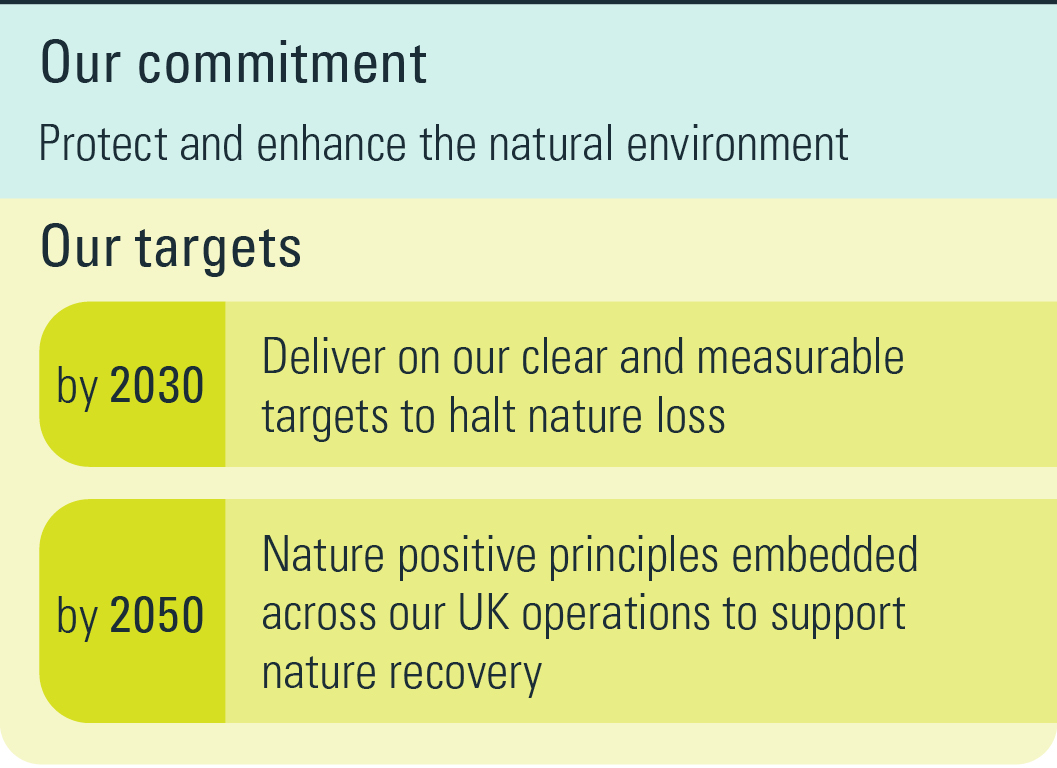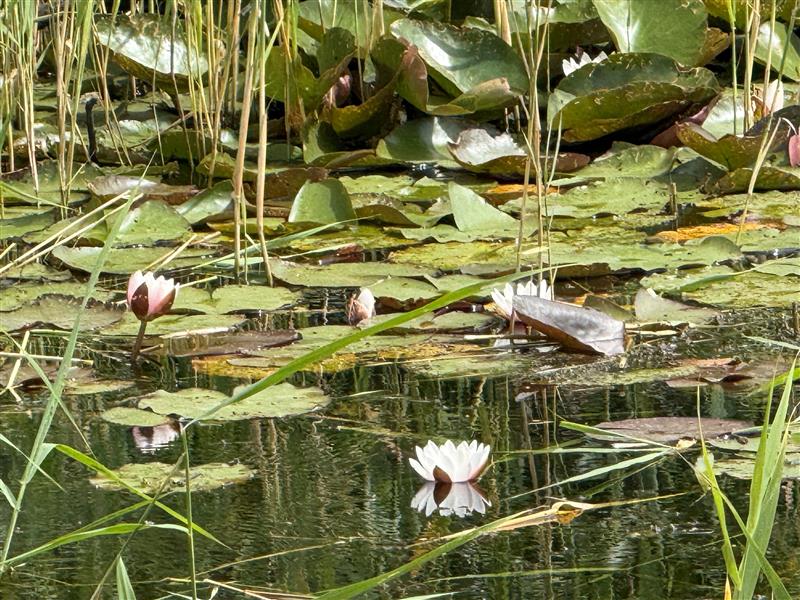The Mitigation Hierarchy in action
Through restoring and enhancing the natural environment, we are supporting healthy ecosystems, essential for the future prosperity of communities and economies across the world. These ecosystems are vital in the fight against climate change, providing natural solutions to capture and store carbon emissions while strengthening environmental resilience against the effects of increasingly adverse weather conditions.

As signatories to the Nature Positive Business Pledge, created by the Institute of Sustainability and Environmental Professionals (ISEP), UK Business and Biodiversity Forum, the RSPB, Aldersgate Group and ICC United Kingdom, we are committed to halting and reversing our impact on nature.
To do this, we’re embedding nature positive targets across our operations with each of our UK Business Units setting annually evolving nature targets as part of their Bridging the Gap Sustainability Action Plans. These targets must consider all areas of our UK-wide Nature Positive Principles (shown below), to ensure that local targets and supporting actions drive forward Balfour Beatty’s approach to protecting and enhancing the natural environment.


Our UK nature positive targets will be overseen by our in-house ecologists (one of the few dedicated teams in the industry). They support our project delivery teams to implement the mitigation hierarchy and What3Things for Environment approach, in order to avoid, minimise or compensate for any negative impact we have on nature and steer Balfour Beatty’s progress towards its nature positive targets. Working closely with our customers, their work includes surveys, analysing risks and delivering mitigation strategies that protect and enhance nature in and around projects we are delivering. Across all our UK SCAPE Civil Engineering Framework projects, we provide every customer with a report detailing project-specific feasible options and available measures to achieve biodiversity net gains, on or off-site.
¹ targets to be set in 2025


